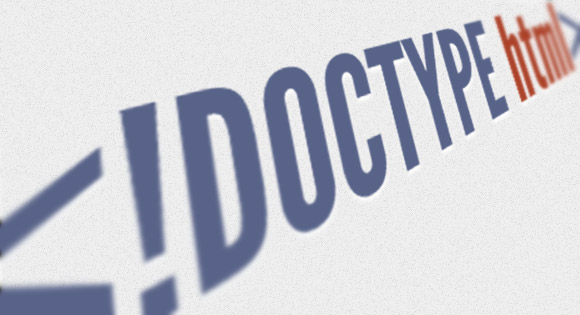本文主要是介绍Top 10 Reasons to Use HTML5 Right Now,希望对大家解决编程问题提供一定的参考价值,需要的开发者们随着小编来一起学习吧!
Top 10 Reasons to Use HTML5 Right Now
转自:http://tympanus.net/codrops/2011/11/24/top-10-reasons-to-use-html5-right-now/
So you’re still not using HTML5, huh? I guess you probably have your reasons; it’s not fully adopted yet, it doesn’t work in IE, you don’t like users, you’re out of touch or you are just passionately in love with writing strict XHTML code. HTML5 is the revolution that the web needed and the fact is, it is the future whether you like it or not — suck it up and deal. HTML5 isn’t hard to use or understand and even though it’s not fully adopted yet, there are still plenty of reasons to start using itright now — like right after you get done reading this article.
There are lots of articles touting the use of HTML5 and praising the benefits of it, yes this is another one of those. With all these articles, with Apple pushing it, with Adobe building new dev products around it, and with so many web sites devoted to it, I still talk to fellow designers and developers who haven’t or won’t adopt it for a variety of reasons. I think themain problem is, it still seems like a mysterious creature to many. To many it feels more like the jet pack or the flying car — an awesome idea that is fun to think about but still not practical in its use. Wrong, the reality is that it is extremely practical right now! It’s not the latest Mercedes concept car being towed around form car show to car show, it’s a reality and it’s not going anywhere.
In order to further demystify HTML5 and help these knuckle dragging designers and developers to jump on the bandwagon I’ve put together a top ten list of reasons why we should all be using HTML5 right now. For those that currently use HTML5 this list may not be anything new or ground breaking, but hopefully it will inspire you to share the benefits of HTML5 with others in the community. We’ll do this Letterman countdown style (minus the celebrity presenter) and start with number ten –accessibility.
10 – Accessibility

HTML5 makes creating accessible sites easier for two main reasons: semantics and ARIA. The new (some currently available) HTML headings like <header>, <footer>, <nav>, <section>, <aside>, etc. allow screen readers to easily access content. Before, your screen readers had no way to determine what a given <div> was even if you assigned it an ID or Class. With new semantic tags screen readers can better examine the HTML document and create a better experience for those who use them.
ARIA is a W3C spec that is mainly used to assign specific “roles” to elements in an HTML document – essentially creating important landmarks on the page: header, footer, navigation or article, via role attributes. This has been well overlooked and widely under-used mostly due to the fact that it wasn’t valid, however, HTML5 will validate these attributes. Also, HTML5 will have built in roles that can’t be over-ridden making assigning roles a no brainer. For a more in depth discussion on HTML5 and ARIA please visit the WAI.
9 – Video and Audio Support
Forget about Flash Player and other third party media players, make your videos and audio truly accessible with the new HTML5 <video> and <audio> tags. Getting your media to play correctly has always been pretty much a nightmare, you had to use the <embed> and <object> tags and assign a huge list of parameters just to get the thing visible and working correctly. Your media tags just become these nasty, huge chunks of confusing code segments. HTML5′s video and audio tags basically treat them as images; <video src=”url”/>. But what about all those parameters like height, width and autoplay? No worries my good man, just define those attributes in the tag just like any other HTML element: <video src=”url” width=”640px” height=”380px” autoplay/>.
It’s actually that dead simple, however because old evil browsers out there don’t like our HTML5 friend, you’ll need to add a little bit more code to get them working correctly… but this code isn’t nearly as gnarly and messy as the <object> and <embed> tags:
| 1 2 3 4 5 | < video poster = "myvideo.jpg" controls> < source src = "myvideo.m4v" type = "video/mp4" /> < source src = "myvideo.ogg" type = "video/ogg" /> < embed src = "/to/my/video/player" ></ embed > </ video > |
Some resources worth checking out:
- HTML5 Audio and Video: What you Must Know
- Audio and Video processing
in HTML5 - How to Make Your Own Video Player On HTML5 Video
- Using HTML5 Video and Audio in Modern Browsers
- Browserscene: Creating a 3D sound visualiser with WebGL and HTML5 audio
8 – Doctype

| 1 | <!DOCTYPE html> |
Yup that’s it, that is the doctype, nothing more, nothing less. Pretty simple right? No more cutting and pasting some long unreadable line of code and no more dirty head tags filled with doctype attributes. You can simply and easily type it out and be happy. The really great thing about it though, beyond the simplicity, is that it works in every browser clear back to the dreaded IE6.
7 – Cleaner Code
If you are passionate about simple, elegant, easy to read code then HTML5 is the beast for you. HTML5 allows you to write clear and descriptive code, semantic code that allows you to easily separate meaning from style and content. Consider this typical and simple header code with navigation:
| 1 2 3 4 5 6 7 8 9 10 | < div id = "header" > < h1 >Header Text</ h1 > < div id = "nav" > < ul > < li >< a href = "#" >Link</ a ></ li > < li >< a href = "#" >Link</ a ></ li > < li >< a href = "#" >Link</ a ></ li > </ ul > </ div > </ div > |
So this code is pretty clean and simple? But with HTML5 you can clean this up even more and at the same time give your markup more meaning:
| 1 2 3 4 5 6 7 8 9 10 | < header > < h1 >Header Text</ h1 > < nav > < ul > < li >< a href = "#" >Link</ a ></ li > < li >< a href = "#" >Link</ a ></ li > < li >< a href = "#" >Link</ a ></ li > </ ul > </ nav > </ header > |
With HTML5 you can finally cure your “divitis” and “classitis” by using semantic and HTML headers to describe your content. Previously you would generally just use div’s for every block of content than drop an id or class on it to describe its content but with the new <section>, <article>, <header>, <footer>, <aside> and <nav> tags, HTML5 allows you to code your markup cleaner as well as keep your CSS better organized and happier.
Some resources worth checking out:
- HTML5 Boilerplate
6 – Smarter Storage

One of the coolest things about HTML5 is the new local storage feature. It’s a little bit of a cross between regular old cookies and a client-side database. It’s better than cookies because it allows for storage across multiple windows, it has better security and performance and data will persist even after the browser is closed. Because it’s essentially a client side data base you don’t have to worry about the user deleting cookies and it is been adopted by all the popular browsers.
Local storage is great for many things, but it’s one of HTML5 tools that are making web apps possible without third party plugins. Being able to store data in the user’s browser allows you to easily create those app features like: storing user information, the ability to cache data, and the ability to load the user’s previous application state. If you are interested in getting started with local storage, check out Christian Heilmann’s great 24 Ways article from last year —Wrapping Things Nicely with HTML5 Local Storage.
Some more resources worth checking out:
- Storing Data the Simple HTML5 Way (and a few tricks you might not have known)
- Quick Tip: Learning About HTML5 Local Storage
- HTML5 Local Storage
- 5 Obscure Facts About HTML5 LocalStorage
5 – Better Interactions
Awe, we all want better interactions, we all want a more dynamic website that responds to the user and allows the user to enjoy/interact your content instead of just look at it. Enter <canvas>, the drawing HTML5 tag that allows you to do most (if not more) interactive and animated possibilities than the previous rich internet application platforms like Flash.
Beyond <canvas>, HTML5 also comes with a slew of great APIs that allow you to build a better user experience and a beefier, more dynamic web application — here’s a quick list of native APIs:
- Drag and Drop (DnD)
- Offline storage database
- Browser history management
- document editing
- Timed media playback
For way more info on these APIs and more native interactive features of HTML5 visitHTML5Doctor.
Some resources worth checking out:
- Hakim’s experiments
- Ricardo’s works
- HTML5 Canvas and Audio Experiment
- Ball Pool
- HTML5 Video Destruction
- Social Weather Mapping
4 – Game Development
Yup, that is correct, you can develop games using HTML5′s <canvas> tag. HTML5 provides a great, mobile friendly way to develop fun, interactive games. If you’ve built Flash games before, you’ll love building HTML5 games.
Script-Tutorials has recently offered a four part series of lessons focused on HTML5 game development, head on over and check out some of the sick stuff they have created:
- HTML5 Gaming Development Lesson One
- HTML5 Gaming Development Lesson Two
- HTML5 Gaming Development Lesson Three
- HTML5 Gaming Development Lesson Four
Some more resources worth checking out:
- How to Build Asteroids with the Impact HTML5 Game Engine
- Developing Multiplayer HTML5 Games with Node.js
- How to write a BrikBloc game with HTML5 SVG and Canvas
- How to make a simple HTML5 Canvas game
- Html5 Games
- LimeJS, an HTML5 game framework
3 – Legacy/Cross Browser Support

Your modern, popular browsers all support HTML5 (Chrome, Firefox, Safari IE9 and Opera) and the HTML5 doctype was created so that all browsers, even the really old and annoying ones, er, IE6 can use it. But just because old browsers recognize the doctype that doesn’t mean they can use all the new HTML5 tags and goodies. Fortunately, HTML5 is being built to make things easier and more cross browser friendly so in those older IE browsers that don’t like the new tags we can just simply add a Javascript shiv that will allow them to use the new elements:
| 1 2 3 | <!--[ if lt IE 9]> <script src= "http://html5shiv.googlecode.com/svn/trunk/html5.js" ></script> <![endif]--> |
Some resources worth checking out:
- HTML5 & CSS3 READINESS
- When can I use
- HTML5 Cross Browser Polyfills
- Modernizr
2 – Mobile, Mobile, Mobile
Call it a hunch, but I think mobile technology is becoming more popular these days. I know, that is a pretty crazy assumption and some of your are probably thinking — mobile is just a fad… right. Mobile devices are taking over the world. The adoption of mobile devices continues to grow very rapidly and this means that more and more users will be using their mobile browsers to view your web site or application. HTML5 is the most mobile ready tool for developing mobile sites and apps. With Adobe announcing the death of mobile Flash, you will now count on HTML5 to do your mobile web application development.
Mobile browsers have fully adopted HTML5 so creating mobile ready projects is as easy as designing and constructing for their smaller touch screen displays — hence the popularity of Responsive Design. There are some great meta tags that also allow you to optimize for mobile:
- Viewport: allows you to define viewport widths and zoom settings
- Full screen browsing: IOS specific values that allow Apple devices to display in full screen mode
- Home Screen Icons: like favicons on desktop, these icons are used to add favorites to the home screen of an IOS and Android mobile device
For more info on how to mobilize your site via HTML5, check out “Mobifying” Your HTML5 Site.
Some resources worth checking out:
- Mobile HTML5
- Mobile Boilerplate
- HTML5 Mobile Web Applications
1 – It’s the Future, Get With It!
The number one reason why you should start using HTML5 today is this: it’s the future, start using it now so you don’t get left behind. HTML5 is not going anywhere and as more and more elements get adopted more and more companies will start to develop in HTML5. HTML5 is essentially just HTML, it’s not scary, it’s not anything you really need to figure out or relearn — if you’re developing XHTML strict right now you are already developing in HTML5 so why not take full advantage of it’s current capability?
You really don’t have any excuses not to adopt HTML5 and begin your new love affair with it. Truly, the only real reason I prefer to use HTML5 is just to write cleaner code, all the other benefits and fun features I haven’t even really jumped into yet, but that is the great thing about it, you can just start using it right now and not even change the way you design. So, start using it right now, whether you are just simplifying and making your markup more semantic OR you are gonna build some sick new mobile game that will take over the world — who knows, maybe you can start selling stuffed animal versions of your gaming characters too.
Great HTML5 Resources
http://html5doctor.com
http://html5rocks.com
http://html5weekly.com/
http://www.remysharp.com
http://www.script-tutorials.com
这篇关于Top 10 Reasons to Use HTML5 Right Now的文章就介绍到这儿,希望我们推荐的文章对编程师们有所帮助!








